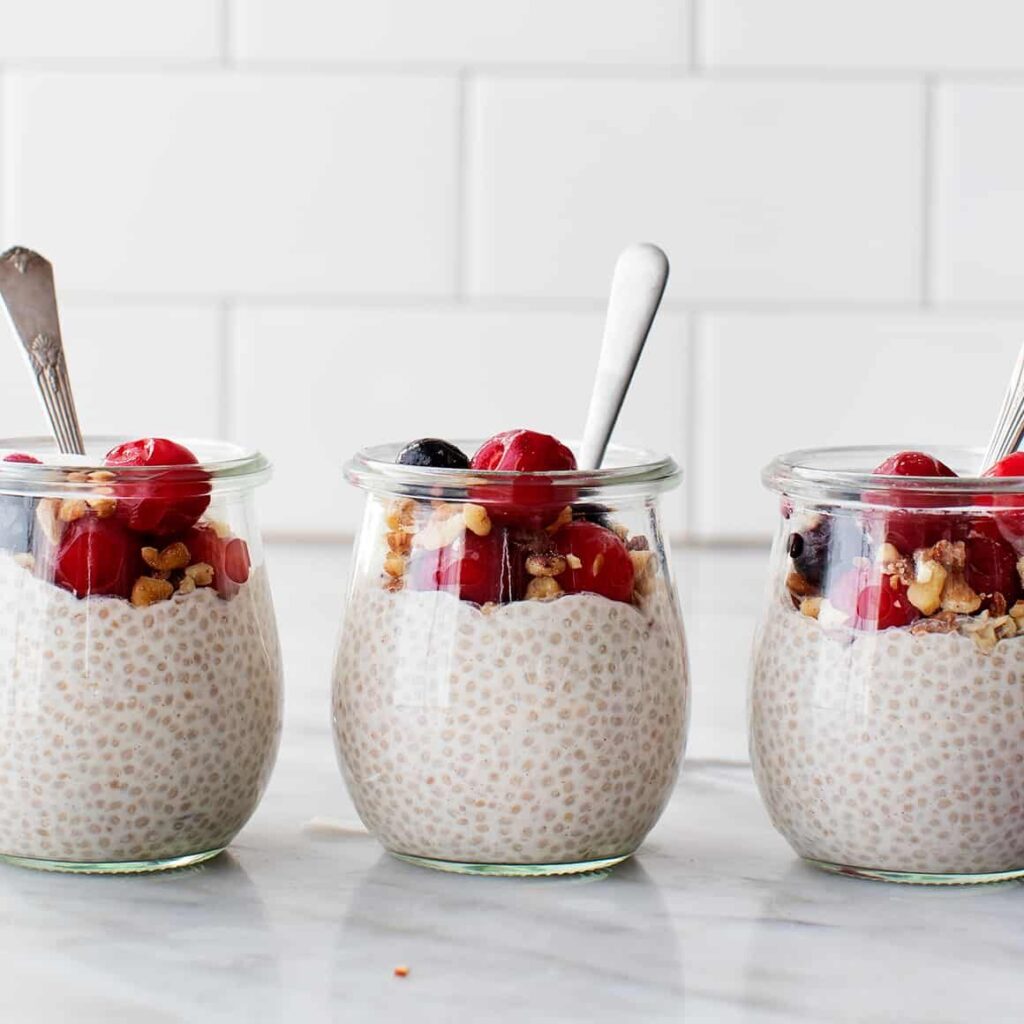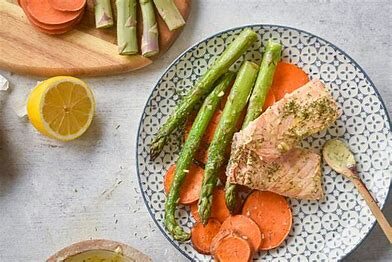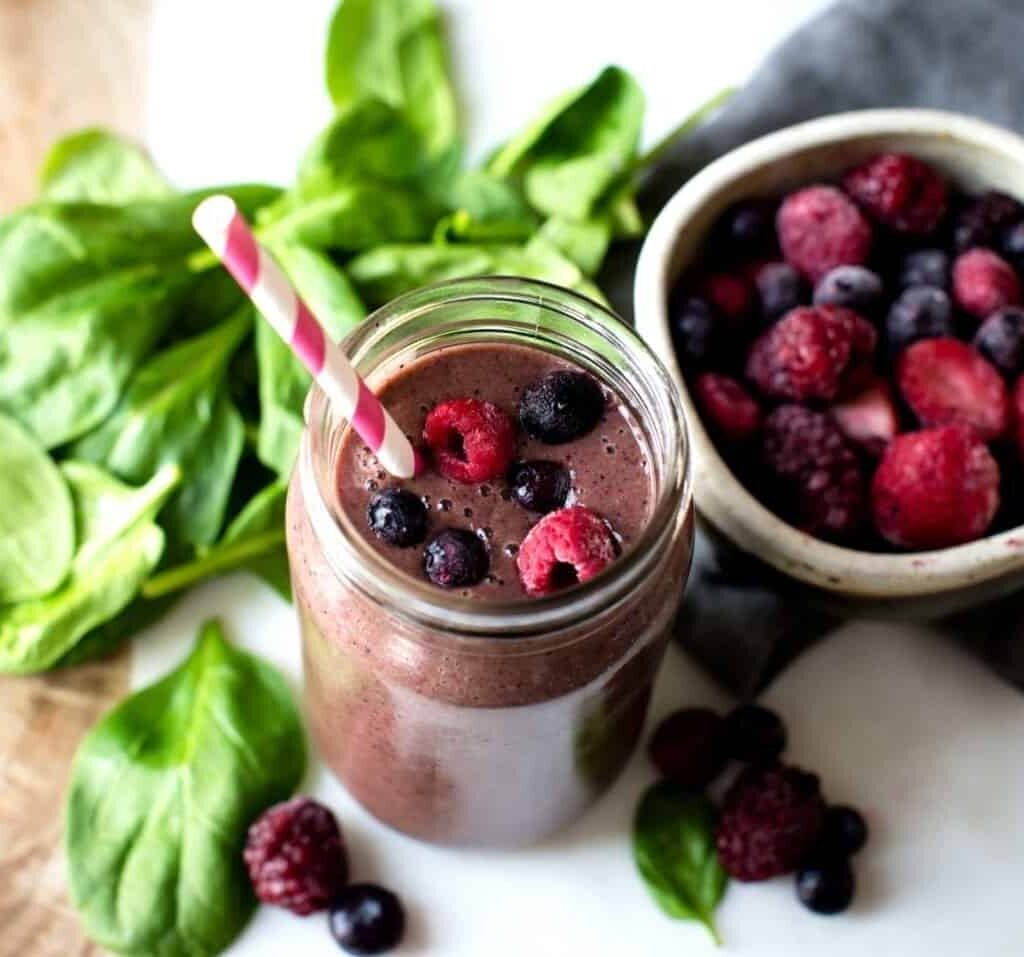
Maintaining balanced blood sugar levels is essential for everyone, especially those with conditions like diabetes or insulin resistance. Controlling blood sugar isn’t just about avoiding sugar or carbohydrates—it’s about adopting a holistic approach to your diet that incorporates foods with a low glycemic index, plenty of fiber, lean protein, and healthy fats. This article provides a variety of delicious Recipes for Regulating Blood Sugar, keeping you feeling energized and healthy throughout the day.
The Science of Blood Sugar Regulation

Before diving into recipes, it’s important to understand how food affects blood sugar. Blood sugar, or glucose, is the body’s main source of energy. When we consume carbohydrates, they are broken down into glucose, which enters the bloodstream. The pancreas then releases insulin, a hormone that helps transport glucose into cells to be used as energy. When this process is disrupted—due to an overabundance of glucose or insufficient insulin—blood sugar levels can become unbalanced, leading to hyperglycemia (high blood sugar) or hypoglycemia (low blood sugar).
To avoid these extremes, it’s important to consume foods that promote steady blood sugar levels. These foods typically have:
- Low Glycemic Index (GI): Foods with a low GI are digested slowly, leading to a gradual increase in blood sugar levels. Examples include whole grains, legumes, and most vegetables.
- High Fiber Content: Fiber slows down the absorption of sugar, preventing spikes in blood sugar levels.
- Healthy Fats and Proteins: These macronutrients do not raise blood sugar levels and can help you feel full longer, reducing cravings.
Now, let’s dive into some recipes that not only taste great but are also designed to help regulate blood sugar.
Breakfast Recipes
1. Overnight Chia Seed Pudding

Chia seeds are packed with fiber, omega-3 fatty acids, and protein, making them a perfect choice for blood sugar regulation. This simple chia seed pudding is easy to prepare the night before and can be customized with different flavors.
Ingredients:
- 1/4 cup chia seeds
- 1 cup unsweetened almond milk (or any preferred milk)
- 1/2 teaspoon vanilla extract
- 1/4 teaspoon cinnamon
- 1 tablespoon chopped nuts (walnuts, almonds, or pecans)
- 1/4 cup fresh berries (blueberries, raspberries, or strawberries)
- Optional: 1 teaspoon honey or maple syrup (for added sweetness)
Instructions:
- In a bowl or mason jar, combine chia seeds, almond milk, vanilla extract, and cinnamon.
- Stir or shake well to ensure the chia seeds are evenly distributed.
- Cover and refrigerate overnight (or at least 4 hours) to let the chia seeds absorb the liquid and thicken.
- In the morning, top with chopped nuts and fresh berries. If desired, add a drizzle of honey or maple syrup.
Nutritional Benefits:
- Fiber: Chia seeds provide ample fiber, which helps slow digestion and maintain stable blood sugar levels.
- Antioxidants: Berries are rich in antioxidants that support overall health and reduce inflammation.
2. Spinach and Mushroom Omelette

Eggs are a great source of protein and healthy fats, and when paired with non-starchy vegetables like spinach and mushrooms, they make for a filling, low-carb breakfast.
Ingredients:
- 2 large eggs
- 1/4 cup chopped spinach
- 1/4 cup sliced mushrooms
- 1 tablespoon olive oil
- 1/4 teaspoon salt
- 1/4 teaspoon black pepper
- Optional: 1 tablespoon grated cheese (feta, cheddar, or mozzarella)
Instructions:
- In a bowl, whisk the eggs with salt and pepper.
- Heat olive oil in a non-stick pan over medium heat.
- Sauté the mushrooms until they release their moisture and begin to brown, about 3-4 minutes.
- Add the spinach and cook until wilted.
- Pour the beaten eggs over the vegetables and cook until the edges start to set.
- Flip one side of the omelette over the other, add cheese if using, and cook until fully set.
Nutritional Benefits:
- Protein: Eggs provide a steady source of protein that can help regulate blood sugar by slowing digestion.
- Low-Carb: This meal is low in carbohydrates, which prevents blood sugar spikes.
Lunch Recipes
3. Quinoa and Black Bean Salad

Quinoa is a complete protein and has a low glycemic index, while black beans are high in fiber and protein. This salad is a nutrient-packed option for a light yet filling lunch.
Ingredients:
- 1 cup cooked quinoa
- 1/2 cup black beans, rinsed and drained
- 1/4 cup chopped red bell pepper
- 1/4 cup chopped cucumber
- 1/4 cup chopped red onion
- 1/4 cup chopped fresh cilantro
- 2 tablespoons olive oil
- 1 tablespoon lime juice
- 1/2 teaspoon ground cumin
- Salt and pepper to taste
Instructions:
- In a large bowl, combine cooked quinoa, black beans, bell pepper, cucumber, red onion, and cilantro.
- In a small bowl, whisk together olive oil, lime juice, cumin, salt, and pepper.
- Pour the dressing over the salad and toss to combine.
- Serve immediately or refrigerate for up to 3 days.
Nutritional Benefits:
- Balanced Protein and Fiber: The combination of quinoa and beans provides a balance of protein and fiber that helps keep you full and prevents blood sugar fluctuations.
- Healthy Fats: Olive oil adds a dose of healthy monounsaturated fats.
4. Grilled Chicken and Vegetable Wrap

This recipe uses a whole wheat tortilla, which has a lower glycemic index than refined flour tortillas, and includes a variety of vegetables for added fiber and nutrients.
Ingredients:
- 1 whole wheat tortilla
- 1/2 cup cooked, sliced grilled chicken breast
- 1/4 cup shredded lettuce
- 1/4 cup sliced cucumber
- 1/4 cup grated carrot
- 1/4 avocado, sliced
- 1 tablespoon hummus
- 1 tablespoon Greek yogurt
- 1/4 teaspoon garlic powder
- 1/4 teaspoon paprika
- Salt and pepper to taste
Instructions:
- Mix Greek yogurt, garlic powder, paprika, salt, and pepper to create a light spread.
- Lay the whole wheat tortilla flat and spread hummus in the center.
- Add grilled chicken, shredded lettuce, cucumber, carrot, and avocado slices.
- Drizzle with the Greek yogurt spread.
- Roll the tortilla tightly, tucking in the sides as you go.
- Slice in half and serve.
Nutritional Benefits:
- Lean Protein: Chicken breast provides lean protein to keep you satiated without raising blood sugar.
- Low Glycemic: The whole wheat tortilla and fiber-rich vegetables help stabilize blood sugar.
Dinner Recipes
5. Baked Salmon with Asparagus and Sweet Potato

Salmon is rich in omega-3 fatty acids, which are anti-inflammatory and beneficial for overall health. Sweet potatoes, despite being a starchy vegetable, have a lower glycemic index compared to regular potatoes.
Ingredients:
- 1 salmon fillet (about 6 ounces)
- 1/2 teaspoon garlic powder
- 1/2 teaspoon dried thyme
- 1/2 teaspoon dried oregano
- Salt and pepper to taste
- 1 tablespoon olive oil
- 1 cup asparagus spears, trimmed
- 1 small sweet potato, peeled and cubed
- Optional: lemon wedges for serving
Instructions:
- Preheat oven to 400°F (200°C).
- Place the sweet potato cubes on a baking sheet and drizzle with 1/2 tablespoon olive oil. Season with salt and pepper. Bake for 10 minutes.
- While sweet potatoes are baking, season salmon with garlic powder, thyme, oregano, salt, and pepper.
- Remove the baking sheet from the oven and add asparagus spears alongside the sweet potatoes. Drizzle with remaining olive oil.
- Place salmon fillet on top of the vegetables and return the baking sheet to the oven.
- Bake for 12-15 minutes or until salmon is cooked through.
- Serve with lemon wedges for a zesty finish.
Nutritional Benefits:
- Healthy Fats: Salmon provides omega-3 fatty acids that support heart health and stabilize blood sugar levels.
- Low Glycemic Vegetables: Asparagus and sweet potatoes offer vitamins and minerals with a balanced impact on blood sugar.
6. Lentil and Vegetable Stew

Lentils are high in fiber and protein, making them an excellent option for regulating blood sugar. Paired with a variety of non-starchy vegetables, this stew is hearty, filling, and low in carbohydrates.
Ingredients:
- 1 cup dried lentils, rinsed
- 1 tablespoon olive oil
- 1 small onion, chopped
- 2 garlic cloves, minced
- 1 carrot, sliced
- 1 celery stalk, sliced
- 1 zucchini, chopped
- 1 cup chopped tomatoes (canned or fresh)
- 4 cups vegetable broth
- 1 teaspoon dried thyme
- 1 teaspoon dried rosemary
- 1 bay leaf
- Salt and pepper to taste
Instructions:
- Heat olive oil in a large pot over medium heat. Sauté onions and garlic until fragrant.
- Add carrots and celery and cook for another 5 minutes.
- Add lentils, zucchini, tomatoes, vegetable broth, thyme, rosemary, bay leaf, salt, and pepper.
- Bring to a boil, then reduce heat and let simmer for 25-30 minutes, or until lentils are tender.
- Remove bay leaf before serving.
Nutritional Benefits:
- High Fiber Content: Lentils are packed with fiber, which aids in maintaining steady blood sugar levels.
- Low Glycemic Vegetables: Non-starchy vegetables add bulk and nutrients without spiking blood sugar.
Snack Recipes
7. Greek Yogurt with Nuts and Seeds

Greek yogurt is rich in protein and probiotics, while nuts and seeds provide healthy fats and fiber. This snack is easy to assemble and perfect for a midday pick-me-up.
Ingredients:
- 1/2 cup plain Greek yogurt
- 1 tablespoon chopped nuts (almonds, walnuts, or pistachios)
- 1 teaspoon chia seeds
- 1 teaspoon ground flaxseed
- Optional: 1/4 teaspoon cinnamon for flavor
Instructions:
- In a small bowl, combine Greek yogurt, nuts, chia seeds, and ground flaxseed.
- Stir well to combine and sprinkle with cinnamon if desired.
- Serve immediately or refrigerate for up to 24 hours.
Nutritional Benefits:
- Protein and Probiotics: Greek yogurt offers protein and beneficial bacteria that support gut health and regulate blood sugar.
- Healthy Fats and Fiber: Nuts and seeds provide satiating fats and fiber to prevent sugar cravings.
8. Avocado and Tomato Salad

Avocados are a rich source of healthy fats, and when combined with tomatoes, they create a satisfying and low-carb snack.
Ingredients:
- 1/2 avocado, diced
- 1/2 cup cherry tomatoes, halved
- 1 tablespoon chopped red onion
- 1 tablespoon chopped fresh basil
- 1 tablespoon lemon juice
- 1 tablespoon extra virgin olive oil
- Salt and pepper to taste
Instructions:
- In a bowl, combine diced avocado, cherry tomatoes, red onion, and basil.
- Drizzle with lemon juice and olive oil.
- Toss gently and season with salt and pepper.
Nutritional Benefits:
- Healthy Fats: Avocados provide monounsaturated fats that promote satiety and stabilize blood sugar levels.
- Low-Glycemic Index: The combination of low-carb vegetables makes this snack blood sugar-friendly.
Beverage Recipes
9. Cinnamon-Spiced Green Tea

Green tea is known for its antioxidant properties and ability to enhance metabolism. Adding a dash of cinnamon can further help in managing blood sugar levels.
Ingredients:
- 1 cup boiling water
- 1 green tea bag
- 1/4 teaspoon ground cinnamon
- Optional: 1 teaspoon lemon juice
Instructions:
- Steep the green tea bag in boiling water for 3-5 minutes.
- Remove the tea bag and stir in ground cinnamon.
- Add lemon juice for extra flavor if desired.
Nutritional Benefits:
- Antioxidants: Green tea is rich in antioxidants like catechins that promote overall health.
- Blood Sugar Regulation: Cinnamon has been shown to lower blood sugar levels by increasing insulin sensitivity.
10. Berry and Spinach Smoothie

Smoothies can be a great way to incorporate more fruits and vegetables into your diet. This recipe is low in sugar and high in fiber and nutrients.
Ingredients:
- 1/2 cup frozen mixed berries (blueberries, strawberries, raspberries)
- 1/2 cup spinach leaves
- 1/2 cup unsweetened almond milk
- 1/4 cup Greek yogurt
- 1 tablespoon chia seeds
- Optional: 1/2 teaspoon vanilla extract
Instructions:
- Combine all ingredients in a blender and blend until smooth.
- Pour into a glass and serve immediately.
Nutritional Benefits:
- Fiber and Antioxidants: Berries and spinach provide a combination of fiber and antioxidants that help regulate blood sugar.
- Protein: Greek yogurt adds protein to help stabilize blood sugar.
Tips for Success
Incorporating these recipes into your daily diet can help promote balanced blood sugar levels. Here are a few additional tips:
- Monitor Portion Sizes: Even healthy foods can raise blood sugar if consumed in large quantities.
- Stay Hydrated: Proper hydration can help maintain stable blood sugar levels.
- Combine Carbohydrates with Protein or Fat: This can slow the absorption of sugar and prevent spikes in blood glucose.
- Eat Regularly: Avoid long gaps between meals to prevent low blood sugar levels.
By focusing on a balanced diet with a varietyof nutrient-dense foods, you can create a sustainable lifestyle that promotes overall health while managing blood sugar levels effectively.
Conclusion
Managing blood sugar levels doesn’t have to be complicated or boring. With these ten delicious recipes, you can enjoy a variety of meals and snacks that not only satisfy your taste buds but also support your health. From hearty breakfasts to refreshing smoothies and flavorful salads, each recipe is designed to provide essential nutrients while keeping your blood sugar in check.
Remember, the key is to focus on whole, minimally processed foods rich in fiber, healthy fats, and protein. This approach can help stabilize your blood sugar, reduce cravings, and enhance your overall well-being. So go ahead, try these recipes, and take a step towards a healthier you!
Frequently Asked Questions
FAQ 1: What types of foods help regulate blood sugar levels?
Answer: Foods that help regulate blood sugar include whole grains (like oats and quinoa), non-starchy vegetables (like leafy greens and bell peppers), lean proteins (such as chicken and tofu), healthy fats (like avocados and nuts), and low-glycemic fruits (like berries and apples).
FAQ 2: How often should I eat to maintain stable blood sugar levels?
Answer: Aim for three balanced meals and 1-3 healthy snacks every day, spaced about 3-5 hours apart. This helps prevent significant fluctuations in blood sugar levels. Including a mix of carbohydrates, proteins, and fats in each meal can further stabilize blood sugar.
FAQ 3: Can I include fruits in my diet if I have blood sugar concerns?
Answer: Yes, you can eat fruits, but focus on low-glycemic options like berries and apples. Choose whole fruits over juices, as they contain fiber that slows sugar absorption. Pairing fruit with protein or healthy fats can also help minimize blood sugar spikes.
FAQ 4: What are some healthy snacks to help regulate blood sugar?
Answer: Healthy snack options include Greek yogurt with nuts, hummus with vegetable sticks, apple slices with almond butter, cottage cheese with berries, and hard-boiled eggs. These snacks provide protein, fiber, and healthy fats to keep blood sugar stable.
FAQ 5: Can I drink coffee or tea if I have blood sugar issues?
Answer: Yes, coffee and tea can be part of your diet. Coffee may improve insulin sensitivity, while green tea offers antioxidants. Just be cautious about added sugars and high-calorie creamers, as they can lead to blood sugar spikes. Opt for black coffee or unsweetened beverages.

Wow awesome can I include fruits in my diet if I have blood sugar concerns?
Wow
But the Greek Yogurt with nut and seed ingredients will be hardly to see
I love the processing